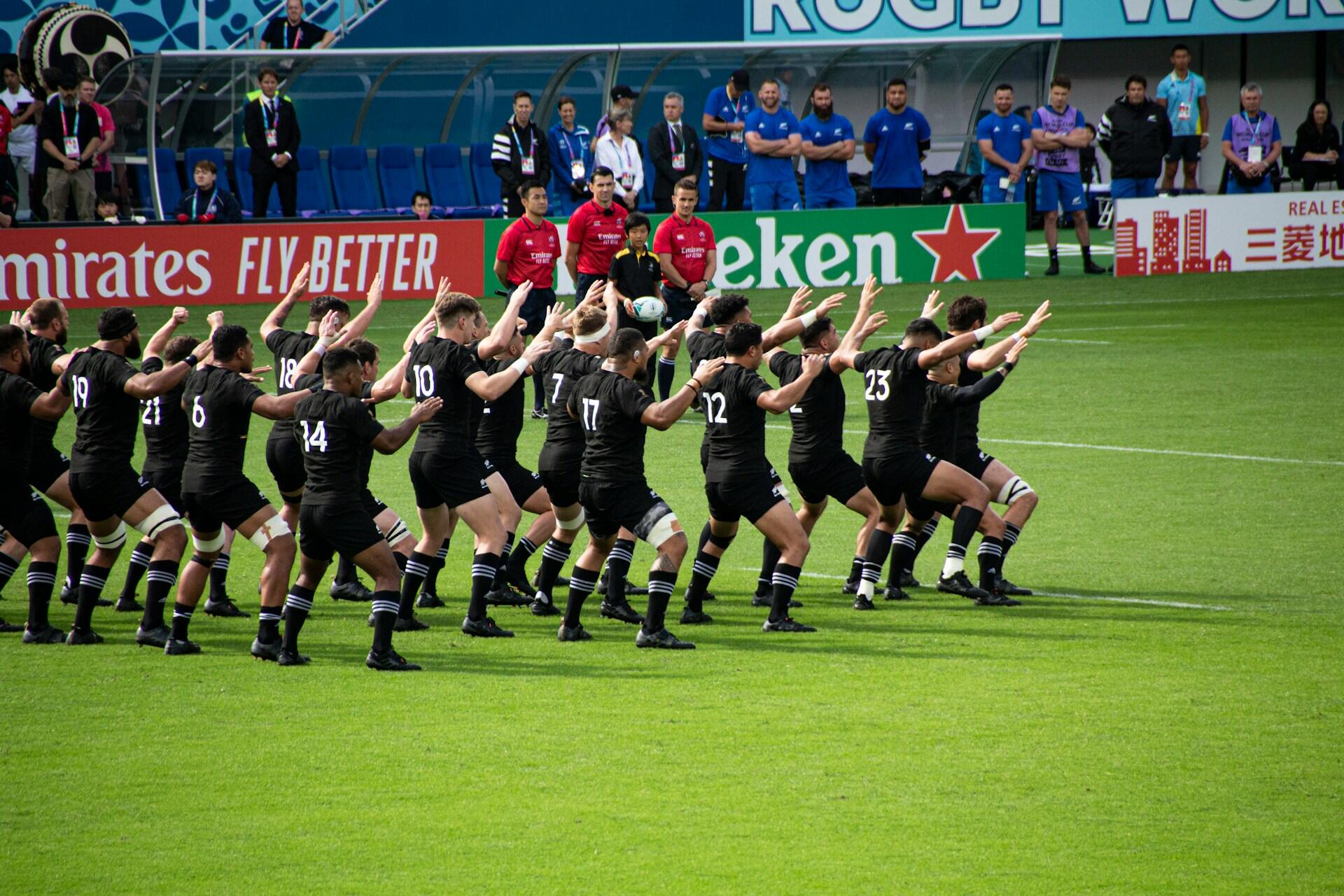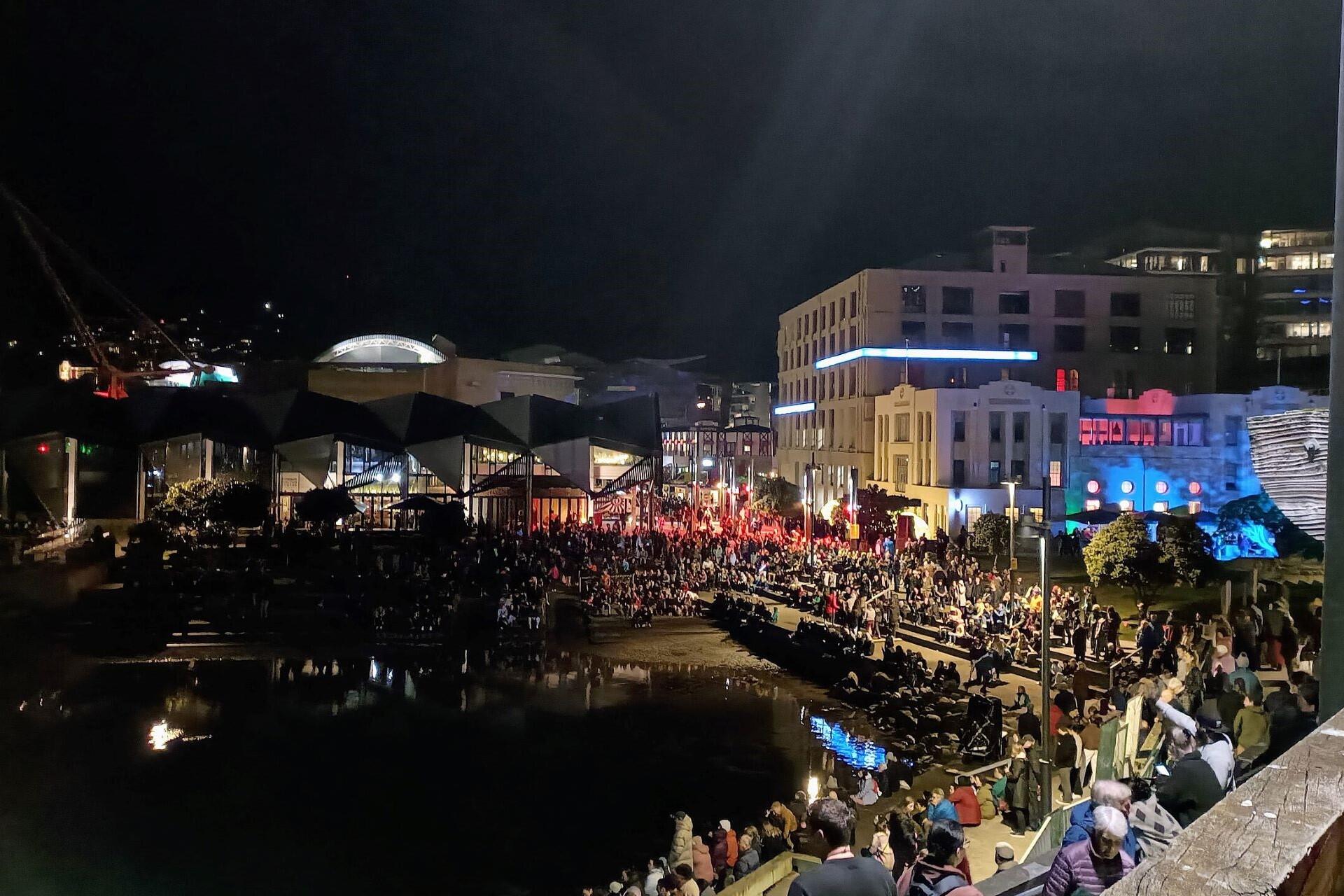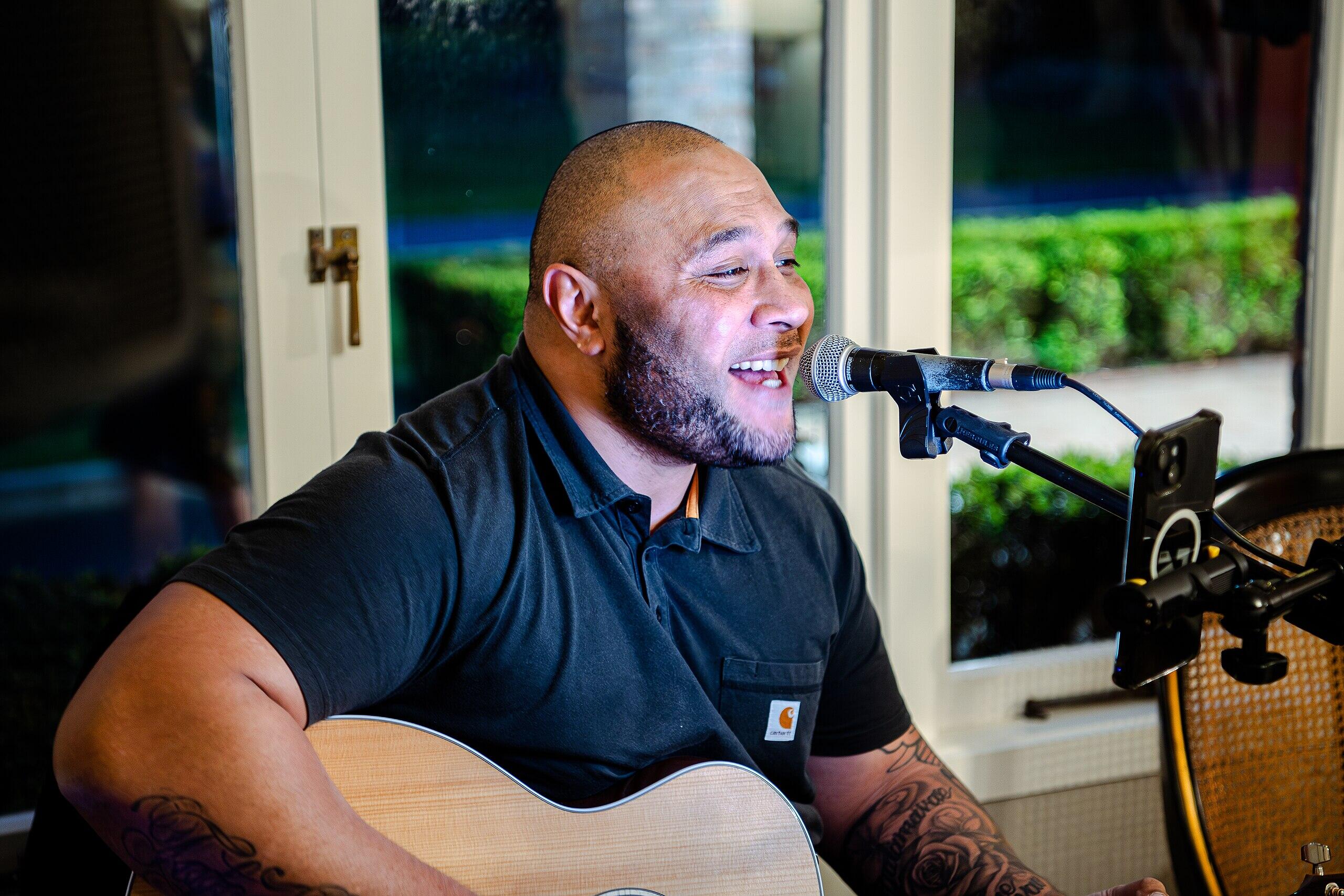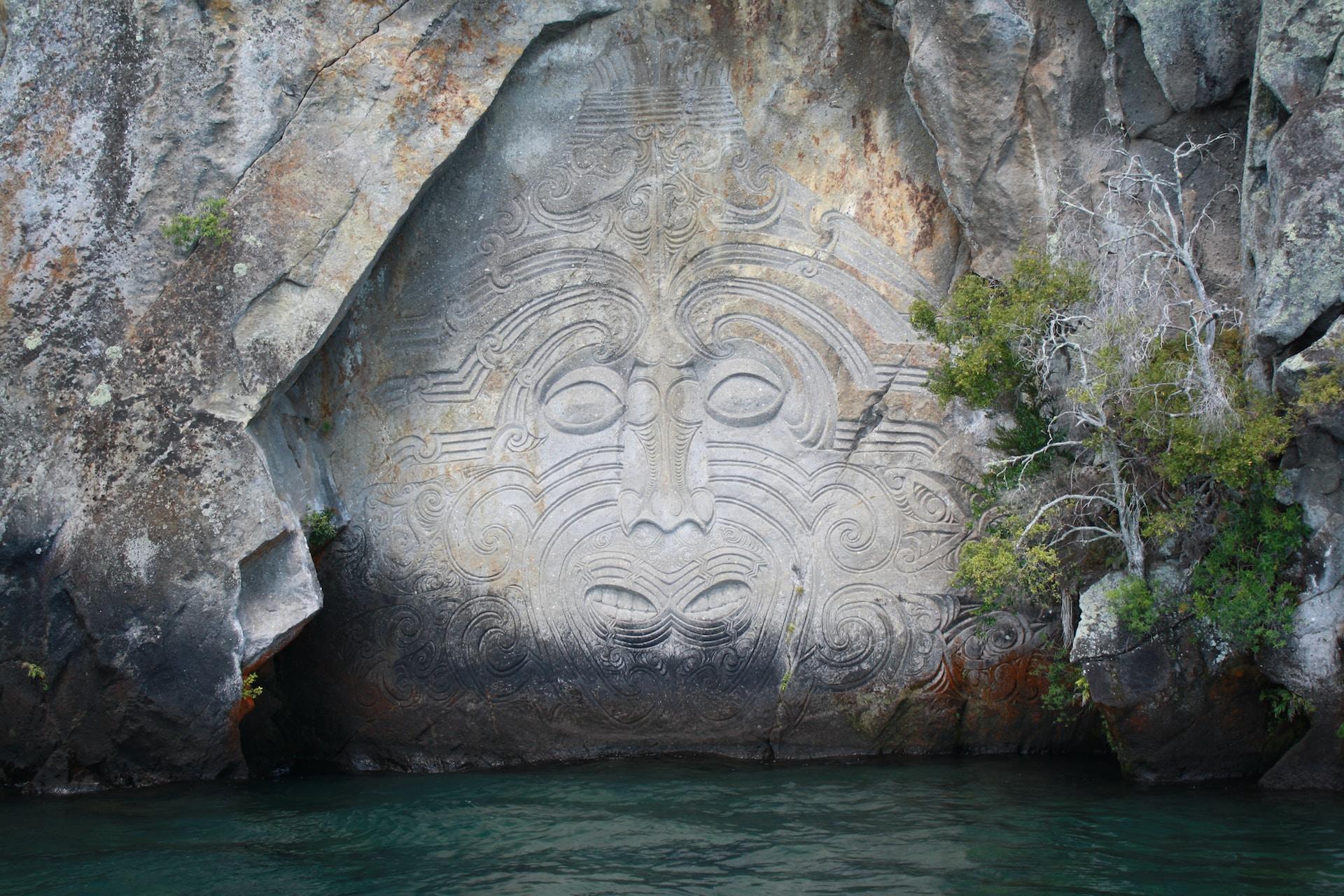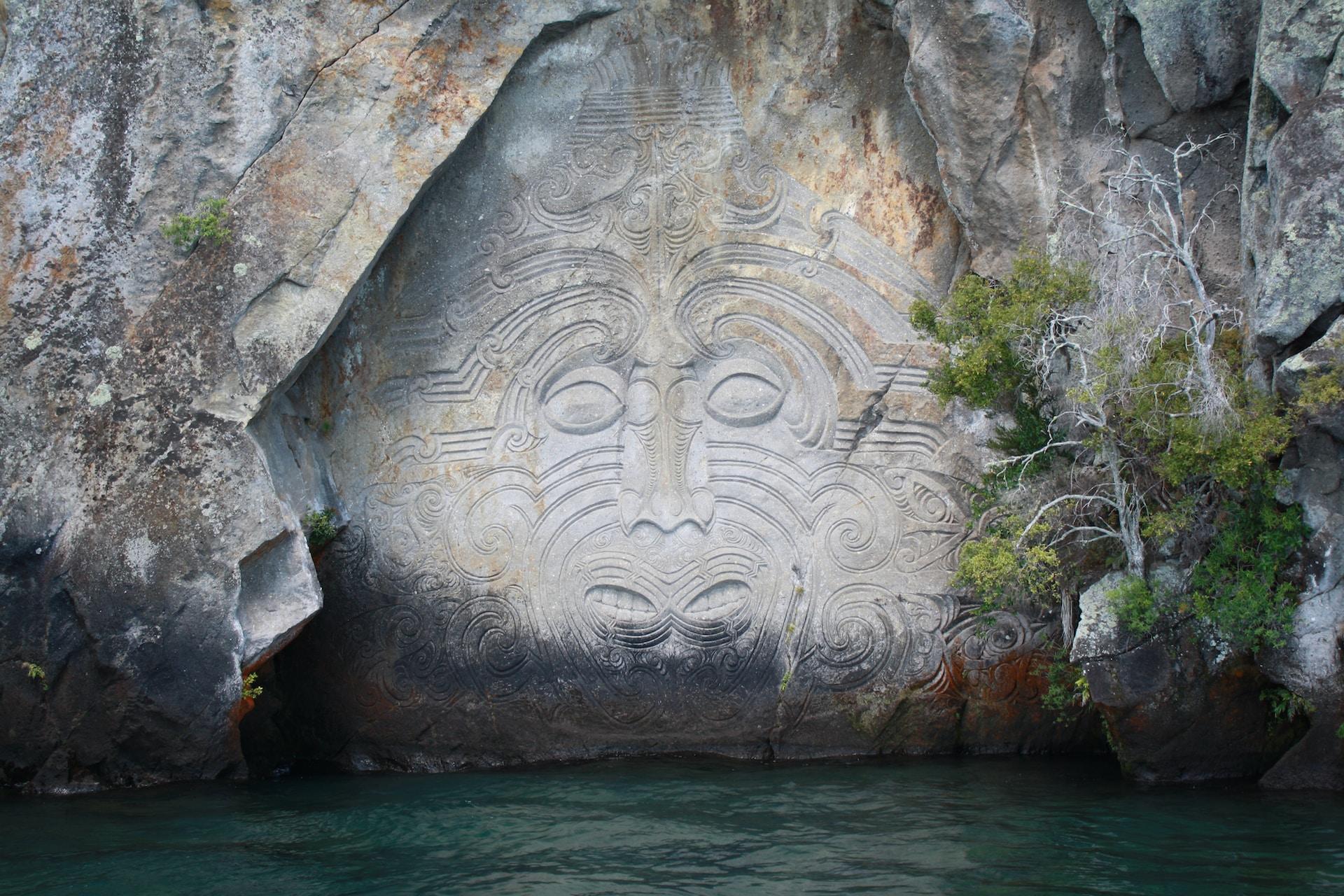Kapa haka is the traditional Māori performing art that blends song, dance, and storytelling. It's been practised for generations in Aotearoa (New Zealand) and is deeply rooted in the traditions of the Māori.
Literally meaning “group dance”, kapa haka can include performances ranging from ceremonial rituals to displays of unity and defiance.
Here, we'll explore the rich history of kapa haka, including its historical uses, the different types of haka, and its significance in Māori culture today.

The Historical Roots of Kapa Haka
Kapa haka can be traced back to early Māori communities in Aotearoa (New Zealand). This collective art form combines dance, chant, and song.
It tells stories, preserves histories, and strengthens social bonds. It is deeply rooted in Polynesian navigation and was brought to New Zealand over 1,000 years ago by the ancestors of the Māori.

Cultural Expression and Identity
The earliest kapa haka performances were far more than just displays of art. They were communal practices that reinforced a group's identity and solidarity. Tribal groups performed to communicate their stories, assert their mana (authority), and form relationships with other iwi (tribes).
Despite being over 1,000 years old, kapa haka is still practised today. It thrives in Māori cultures and has been adapted to the modern world.
Types of Haka: War Haka vs. Haka Pōwhiri
Haka is a versatile art form. There are different types of haka for different purposes and contexts. The best-known hakas are the war haka and the haka pōwhiri.
They both include the rhythmic movement, chanting, and storytelling we mentioned earlier, but there are some key differences in their purpose, style, and symbolism.
Here's a comparison of them.
| Aspect | War Haka (Peruperu) | Haka Pōwhiri |
|---|---|---|
| Purpose | Performed by warriors to prepare for battle, intimidate enemies, and display unity. | Performed to welcome and greet visitors in a peaceful, ceremonial setting. |
| Style | Aggressive, with vigorous stomping, weapon displays, and loud, forceful chanting. | Graceful and formal, focusing on ceremonial calls and symbolic gestures. |
| Movements | Includes body slapping, synchronised jumps, and exaggerated gestures. Often incorporates taiaha (spear-like weapon) or mere (club). | Gentle hand movements, poetic chanting, and melodic elements, often accompanied by karanga (calls). |
| Symbolism | Represents strength, readiness for war, and defiance. | Symbolises peace, connection, and respect for guests. |
The Distinct Roles of Each Haka
Not only do these hakas look different, they both have very clear and distinct roles.
- War Haka (Peruperu): This type of haka was historically performed before going into battle. It showcases a tribe's strength, unity, and determination. Warriors would use the haka to invoke the support of their ancestors and intimidate their foes with fierce expressions and dynamic movements.
- Haka Pōwhiri: The haka pōwhiri is a largely different haka. This is used during ceremonial welcomes, like on a marae. Unlike the peruperu, it displays goodwill, respect, and spiritual connection between manuhiri (visitors) and tangata whenua (hosts).
While the war haka embodies strength and defiance, the haka pōwhiri reflects unity and peace, illustrating the haka’s diverse applications in Māori culture.

The War Haka (Peruperu)
Let's look more deeply at the war haka (peruperu). It is the most dramatic and intense form of haka. Historically performed by Māori warriors before battle, it serves multiple purposes.
It invokes spiritual strength from ancestors, demonstrates a tribe's unity, and intimidates opponents before battle. The peruperu is an iconic example of how the haka can be fierce and defiant.
Purpose and Symbolism
The war haka was often performed before combat. The goal was to:
- Psychologically prepare warriors for the challenges of battle.
- Display the tribe's collective strength and fearlessness to intimidate enemies.
- Call upon ancestors for guidance and protection.
For most, this is the most recognisable form of the haka, with its intense facial expressions.
Movements and Features
The war haka involves synchronised movements. Some of the most common movements include:
- Stomping Feet: Representing strength and grounding to the land.
- Body Slapping: A rhythmic way to build energy and signal unity.
- Pūkana (Wide Eyes): Used to intimidate enemies and show determination.
- Whētero (Tongue Protrusion): A powerful gesture of defiance.
Weapons Used in the War Haka
It's also very common for the periphery to include traditional Māori weapons. These can include:
- Taiaha: A long spear-like weapon used for thrusting and striking.
- Mere: A short, flat club crafted from stone or wood, symbolising mana (authority).
- Patu: A similar club-style weapon used for close combat.
These weapons were essential for the haka and were understandably useful for the battle that was about to ensue.
Cultural Legacy
While the peruperu is no longer a prelude to combat, it's still performed as part of kapa haka performances, particularly during the Te Matatini event and All Blacks rugby matches.

It's a powerful testament to Māori heritage and bridges the past with a modern sense of identity.
The war haka showcases the raw power of Māori traditions, blending physical intensity with cultural and spiritual depth.
The Evolution of Kapa Haka Over Time
Though kapa haka was originally used in ceremonies and warfare, it's since evolved into an art form. It's still practised and celebrated in modern Aotearoa (New Zealand).
Its evolution is a clear example of Māori resilience and adaptability in the face of historical and societal challenges.
From Ritual to Performance
As we've seen, kapa haka originally served a more ritual purpose, especially when preparing for battles. Kapa haka performances were deeply spiritual (and they still are). They reinforced tribal identity, ancestry (whakapapa), and a connection to the land (whenua).
While the battles faced by Māori people have changed, so has kapa haka, which has been adapted from its predominantly functional roots into something more artistic and cultural.
The Impact of European Colonisation
The biggest historical and societal challenges to the Māori people and culture came from European colonisation.

Colonisation disrupted (and banned) many traditional practices, but kapa haka survived, giving Māori communities a way to:
- Preserve Their Heritage: Through songs (waiata) and dances, kapa haka became a vessel for maintaining the Māori language (te reo Māori) and customs.
- Protest and Empowerment: Kapa haka performances were often used during protests to express resistance and demand recognition of Māori rights.
Kapa haka has always been a source of strength and resilience, helping Māori navigate the challenges of colonisation.
Integration of New Elements
As circumstances changed, so did kapa haka. New elements were incorporated into performances, including:
- Poi: A rhythmic dance using tethered balls, traditionally performed by women to display grace and dexterity.
- Modern Waiata: Songs that blend traditional lyrics with contemporary themes.
- Choreography: Enhanced by modern staging techniques, performances now include synchronised movements and dramatic effects.
Kapa Haka Today
Kapa haka is an important part of New Zealand's cultural landscape. Today, you can see it performed at:
- Te Matatini: The national kapa haka competition, showcasing the best performers in the country.
- Schools and Universities: Where kapa haka is used to teach Māori culture and foster unity among students.
- Community and National Events: From marae gatherings to rugby matches, kapa haka remains central to Māori and New Zealand identity.
Kapa haka has transformed from a tribal tradition to a dynamic art form, bridging history and modernity.
Kapa Haka as a Global Phenomenon
Kapa haka is certainly a Māori tradition, but its influence has far extended beyond the borders of Aotearoa (New Zealand). Through cultural exchanges, international events, global performances, and even world records, kapa haka is recognised worldwide.
Cultural Ambassadors on the Global Stage
Performers of kapa haka often act as cultural ambassadors whether they're performing this Māori tradition in an official capacity or not.
Millions have seen kapa haka at events such as World Expos, global festivals, and sporting events.
- The All Blacks rugby team incorporates the haka in their pre-match rituals, bringing global attention to Māori culture.
- Māori cultural groups regularly perform at international events, introducing the art form to diverse audiences.

Te Matatini's International Influence
The Te Matatini festival attracts international visitors to witness the finest kapa haka performances. Unsurprisingly, spectators leave inspired by the incredible depth of Māori storytelling and cultural expression.
Te Matatini is not just a competition; it is a global showcase of Māori cultural excellence.
The Importance of Cultural Integrity
As with any significant cultural practice, it's important that kapa haka is always performed with the respect it deserves.
Māori cultural leaders emphasise the importance of properly educating and guiding anyone performing kapa haka so that performances can be culturally sensitive and respectful.
Global appreciation of kapa haka should always honour its Māori roots, preserving its authenticity and cultural depth.
Kapa haka can act as a bridge between cultures, and its universal themes of identity, unity, and storytelling resonate with Māori and non-Māori people alike.
If you'd like to learn more about Māori culture or even te reo Māori (the Māori language), why not enlist the help of a private tutor?

